The post Hdr panoramas in Autopano Giga appeared first on HDRMAPS™.
]]>The aim of this tutorial is not to explore all the functionalities of Autopano Giga but to focus on specific settings that are beneficial for creating HDRI maps. I will assume that the source photos have been taken with precision, eliminating the need to add extra control points.
1. Develop RAW images
Prepare all RAW files in the software of your choice, such as Adobe Lightroom, RawTherapee, or any other preferred tool. Utilize a flat profile for the photos, ensure the white balance is consistent across all images, clean them of sensor dust, and remove chromatic aberrations. Avoid altering other settings. Finally, export the RAW files as 16-bit TIFF files to preserve as much detail as possible.
2. Load tiff files to Autopano Giga
Open Autopano Giga (APG) and drag & drop the exported TIFF images into the program. Wait some time. Loaded images should appear in the small box.
3. Lens properties
Click on the image icon labeled with an “i” (Image Properties) to verify that the lens was correctly identified. In my case, I had to change the Lens Type to “Fisheye“, because that was a lens I have used with my camera.

4. Create stacks
Right click on the box with images and choose: Create stacks by N
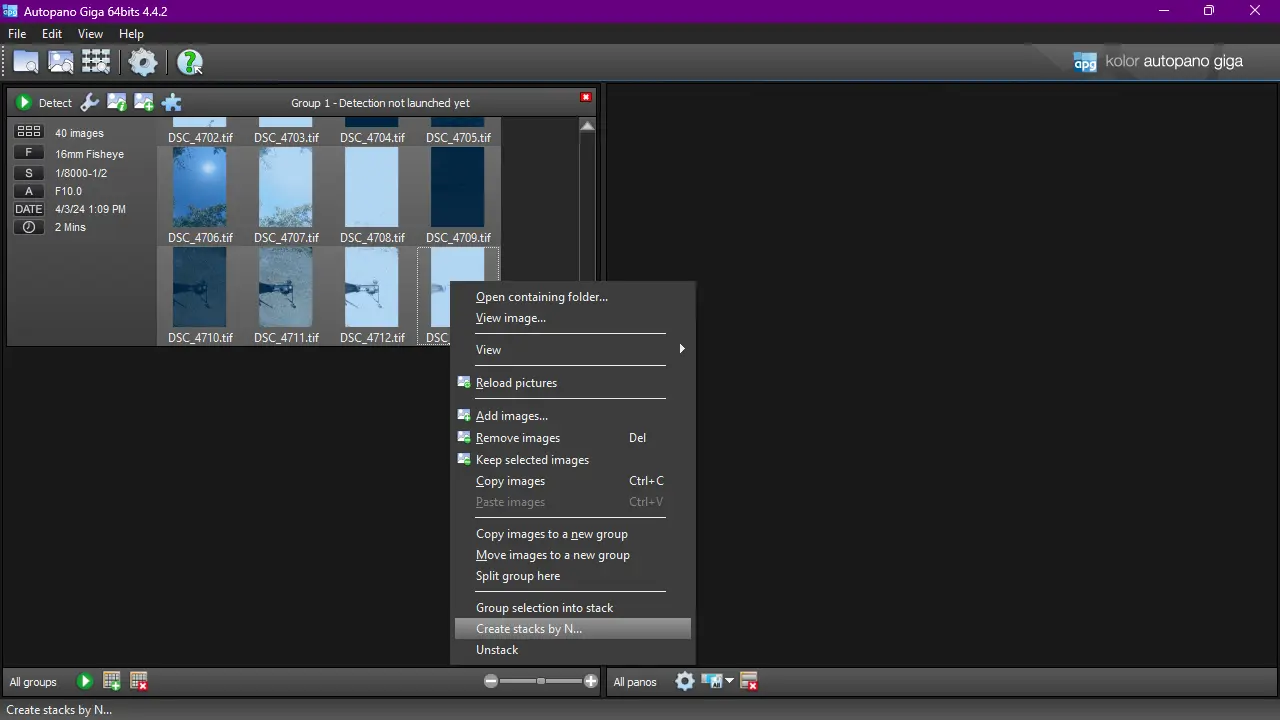
Enter the correct number of pictures per stack; for my type of bracketing, it is 5. I also changed the Index of the main picture to 3, as every third image in the bracketing series typically has the best exposure (you can choose any number that suits your needs here; it’s only for preview purposes).
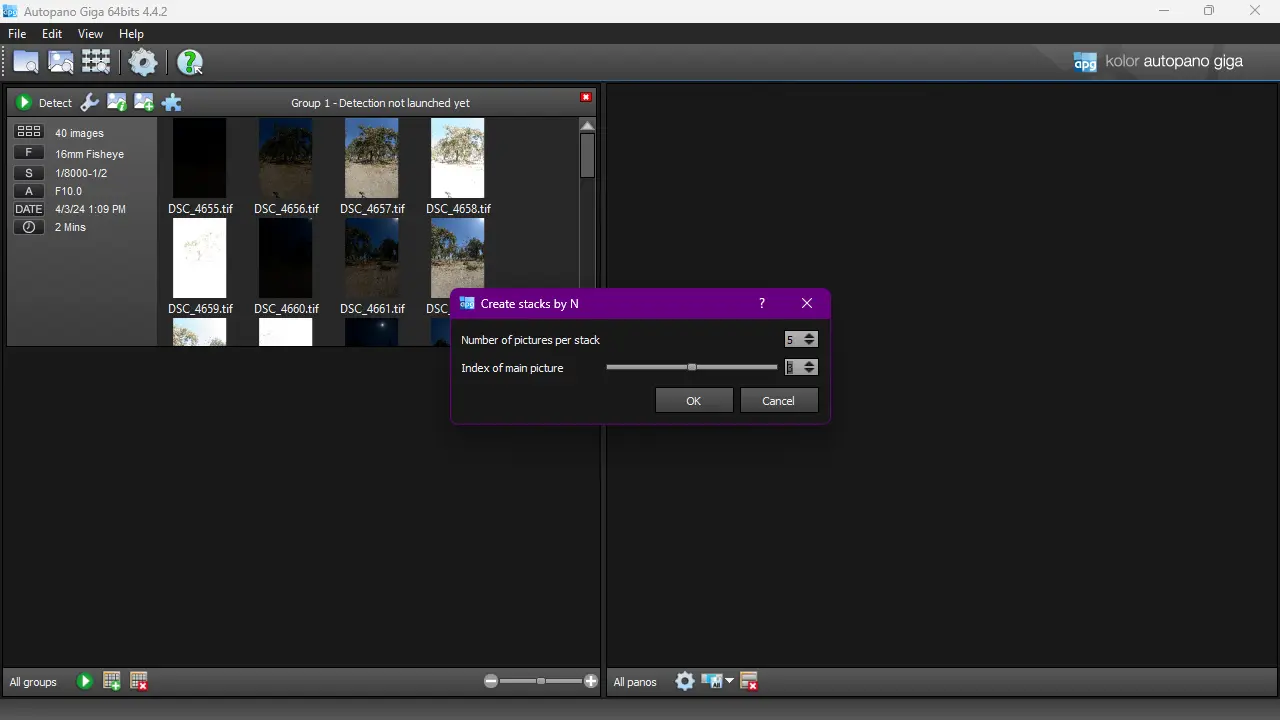
5. Group settings
Click on Group Settings, new window will pop up.
Detection tab:
1. In Links field, enable Force every image to be in on panorama.
2. In Project field, I advice you to use source folder. Just type there %i.
3. In Automate disable Auto color Correction.

In Optimization tab use automatic settings.
In Panorama tab:
Disable Color correction, and enable Exposure and Vignetting. Make sure that Default projection is Spherical, and Default crop set to Maximum projection range.
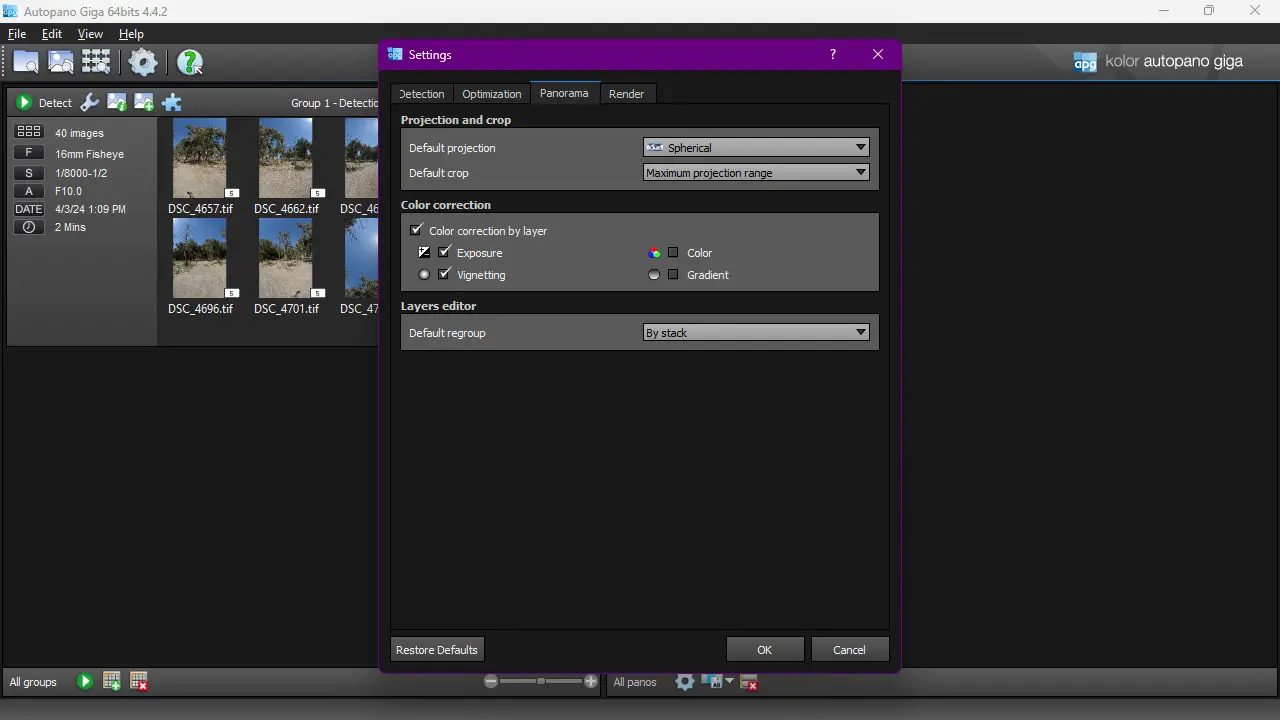
In Render tab:
For the Blending Preset choose Anti-ghost, and for the output Format select .exr with PIZ compression.
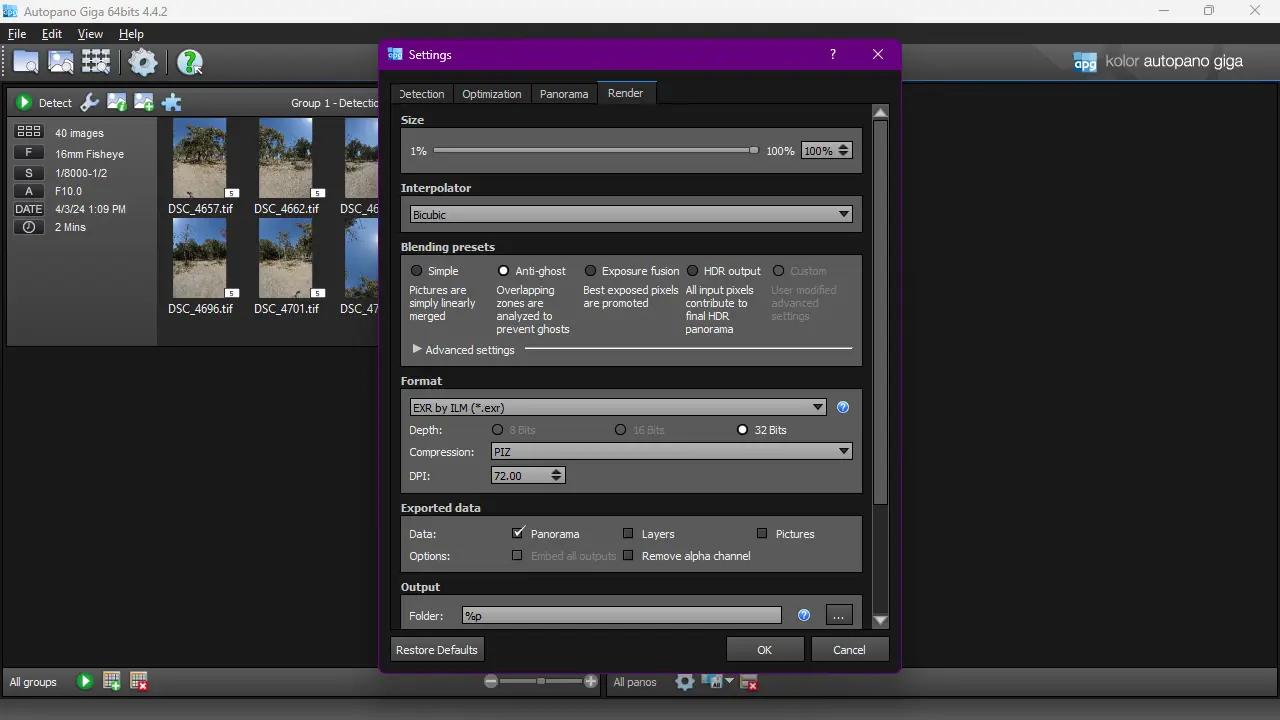
Once everything was set up accordingly, click OK to close window.
6. Detect panorama
Use Detect panorama (green button with arrow), and wait, it should take less than a time indicated below the date label
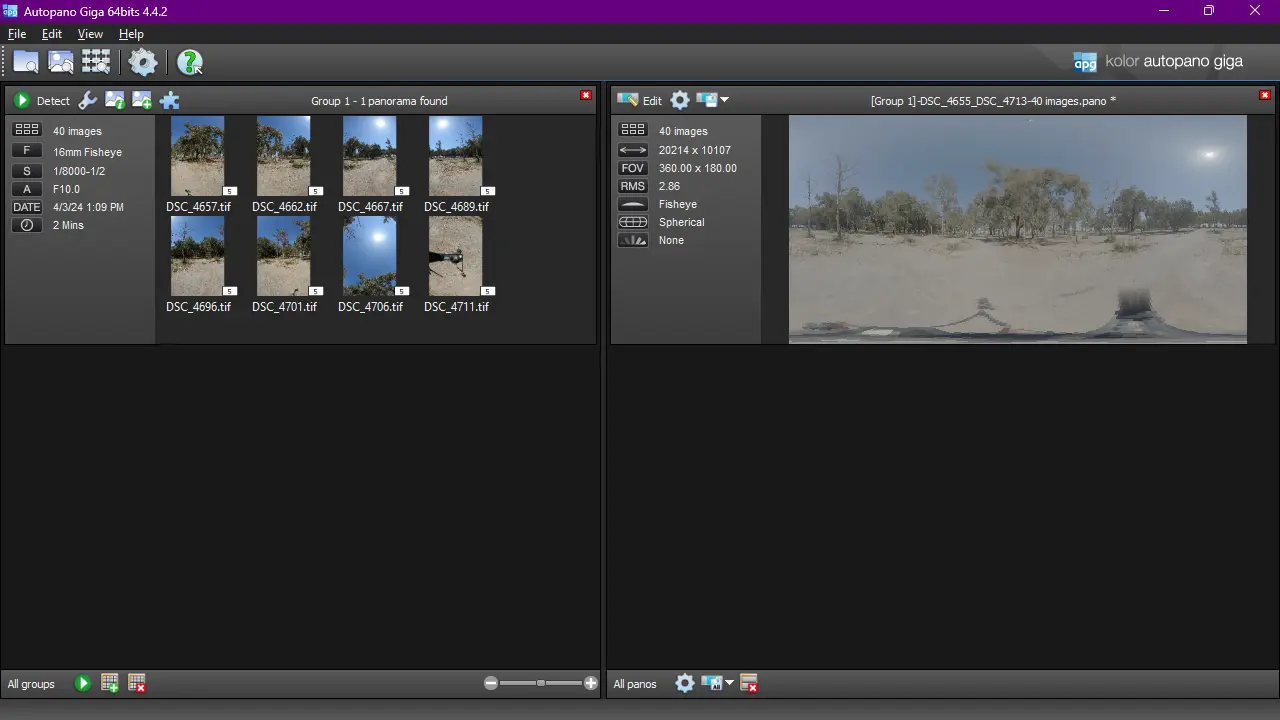
7. Edit panorama
Click on the Edit panorama icon, new window will appear:
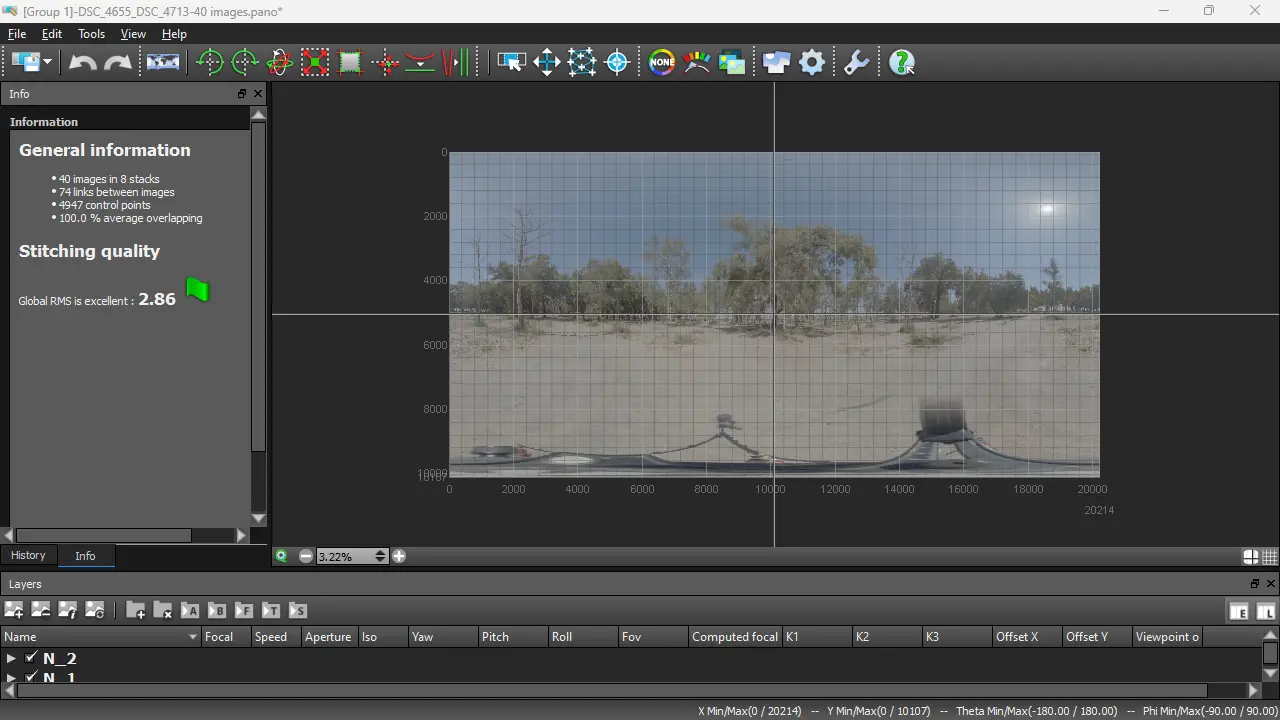
8. Straighten panorama
If you need to straighten panorama, simply use Move images mode. This tool has two modes: Pano pan and Pano rotate, and can work for whole panorama or particular picture. Activate mode you want, and drag and pull whole panorama or particular image.

9. Masking nadir
During my test, I realized that the Mask tool was not effective for HDRIs, but it’s still worth a try. As a workaround, you could export or render the HDRI map as layers and then mask it in Photoshop or Gimp. However, a more efficient method would be to clean the nadir photos in Lightroom or RawTherapee before exporting them and use these cleaned photos as source files.
To remove arm of the panoramic head or any part you don’t want to see, choose red marker that applies on whole stack, and place it on the region of layer you don’t want to see.
Tip: Scroll with a mouse wheel to choose bracketing photo which is not too bright or too dark.
Don’t forget to Apply it (green check mark icon).
If you want preview masking, click on the green icon Preview in the bottom left corner of the window.
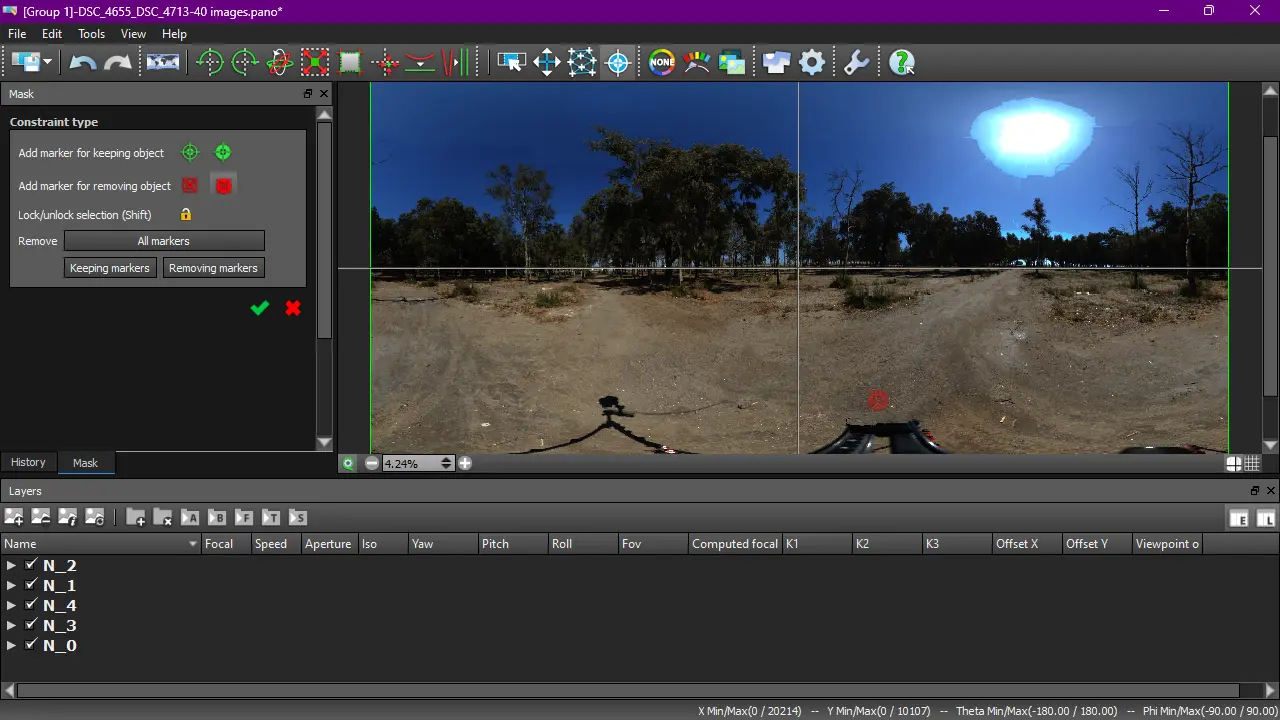
10. Rendering
You can initiate rendering from the Edit Panorama window or the main view. Click on the gear icon; a new window will pop up. Select the desired resolution and output filename. To start rendering, press the Render button at the bottom of the window and wait.
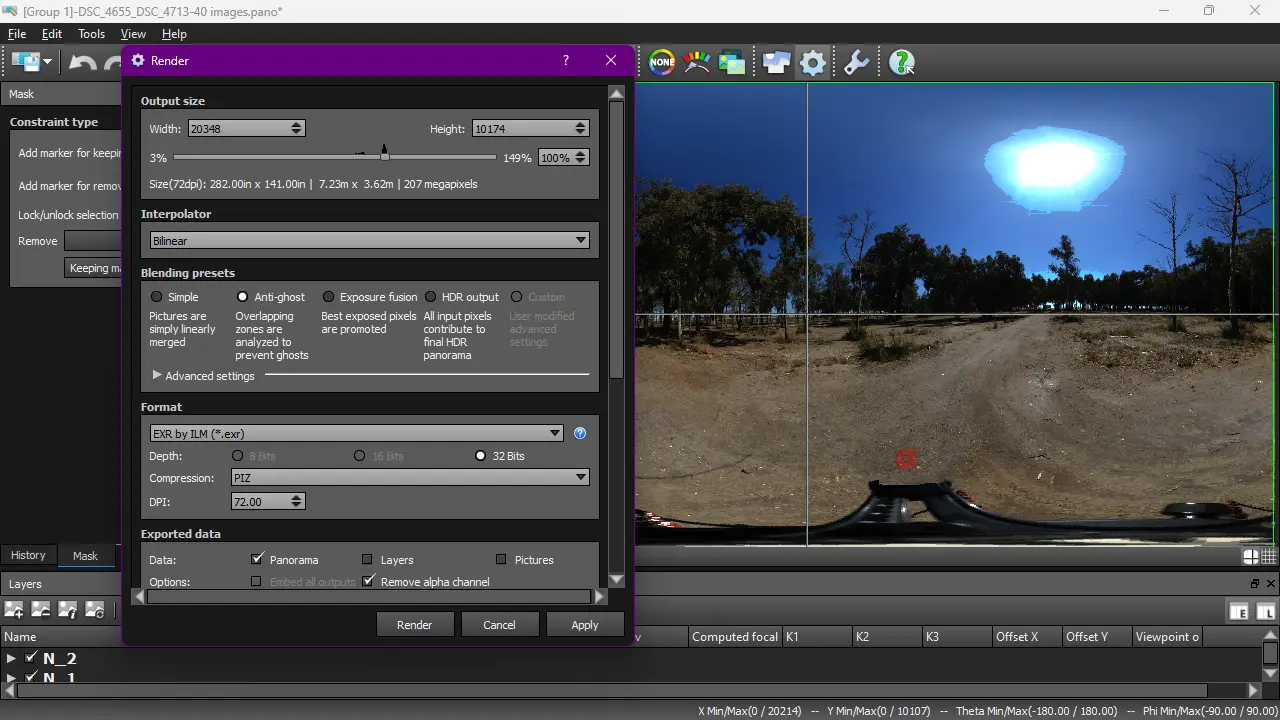
Once it’s finished rendering you can patch nadir or sky using trial version of Pano2VR. More info in How to Create HDRI Maps: A Step-by-Step Tutorial – HDRMAPS™
The post Hdr panoramas in Autopano Giga appeared first on HDRMAPS™.
]]>The post AutoPano Giga is Now Free appeared first on HDRMAPS™.
]]>AutoPano Giga is a powerful tool that can automatically stitch multiple photos into a seamless panorama. You can adjust the projection, the horizon, the color balance and more. You can also create 360° panoramas and export them to various formats.
To get started with AutoPano Giga, you need to download the latest version of the software from the links below.
Windows version (Windows 7, 8, 10, 11):
https://download.hdrmaps.com/AutopanoGiga_x64_442_2018-09-10.exe
MacOS version:
https://download.hdrmaps.com/AutopanoGiga_Mac_442_2018-09-10.dmg
Linux version (Debian, Ubuntu)
https://download.hdrmaps.com/AutopanoGiga_Linux64_442_2018-09-10.deb
Linux (All other distros):
https://download.hdrmaps.com/AutopanoGiga_Linux64_442_2018-09-10.tar.xz
Then, you need to enter the following registration details:
User: [email protected]
Registration code: KAPG7-K3A9X-IZJHX-FIIT7-C5IM8-MQF2N
That’s it! You can now enjoy AutoPano Giga for free and create amazing panoramas with a few clicks.
To create panorama just drag photos on the workspace and click green button with label detect.
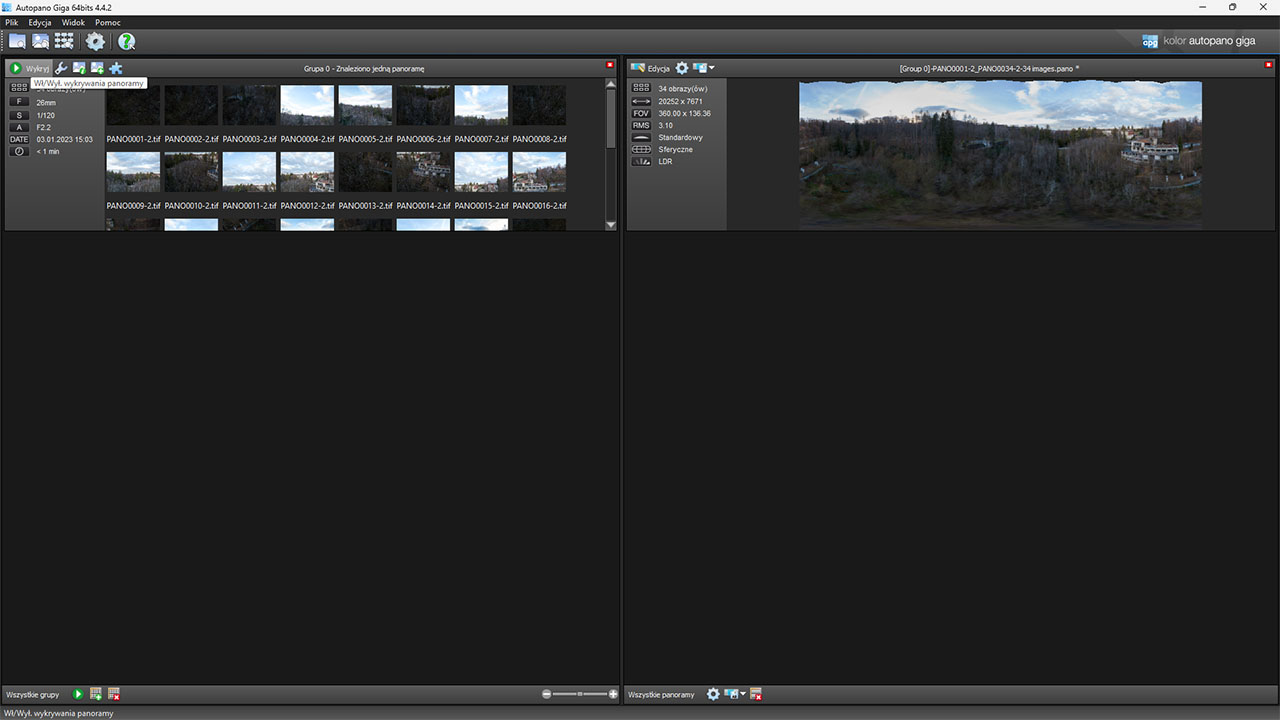
I have prepared tutorial on creating hdr panoramas in Autopano Giga here
Troubleshooting:
If you have installed APG on Windows 11 and it doesn’t run, you’ll need to download OpenSSL Shared Library from here https://www.dll-files.com/libeay32.dll.html and copy and paste it into program installation directory.
For MacOS users: Try to reinstall program without additional plugins if you can’t run it.
The post AutoPano Giga is Now Free appeared first on HDRMAPS™.
]]>